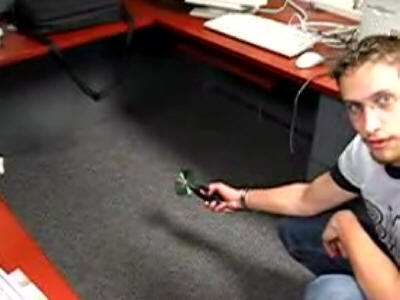How will a laser disc break if it is rotated to the limit of its durability?

YouTuber
Spinning a Laserdisc to Shrapnel at 80,000fps - The Slow Mo Guys - YouTube
Gav and Dan from The Slow Mo Guys.

The two have shot various videos in slow motion in the past, and have already shot footage of an optical disc spinning at high speed until it breaks.

Colorful CDs were also shattered.

However, because ``past challenges were not taken with TMX,'' he decided to take photos again with Phantom TMX 7510.

'Phantom TMX 7510' is the world's first high-speed camera that uses a back-illuminated sensor, achieving shooting speeds of over 75,000 fps at 1 megapixel resolution.
TMX 7510
https://www.phantomhighspeed.com/products/cameras/tmx/7510
The optical disc used for this shoot is a 'laser disc', which is a record-sized disc for video software that is larger than a CD. At the time, it had higher image quality than VHS, which was a rival video software standard, so it was popular for movies, anime, karaoke, etc., but it was also used for DVDs and online karaoke, which were the same size as CDs and had high image quality and large capacity. With the advent of , demand decreased and it declined in the late 1990s, and production of both hardware and software ended in the 2000s.

The center part is screwed tightly and rotates at high speed.

Suddenly, the disc shattered.
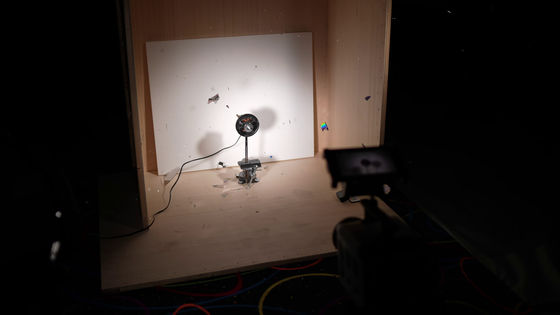
Mr. Dan appeared while holding his mouth like 'Oh my god...'.
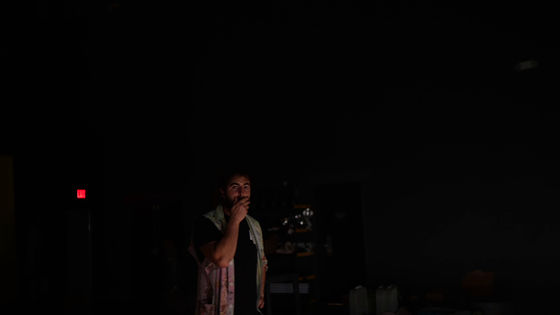
In the second attempt, debris broke through a wooden box placed outside the experimental space. Mr. Dan commented that if he had looked closely during the experiment, it might have turned out like a guillotine.
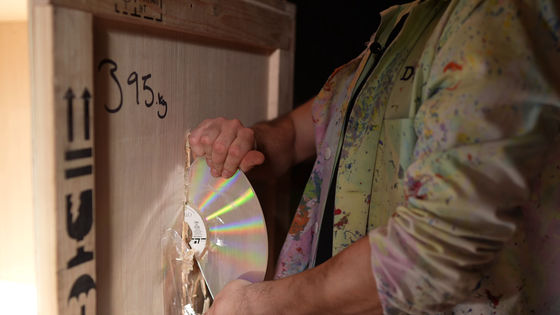
'Phantom TMX 7510' shot at 80,000 fps (80,000 frames per second).
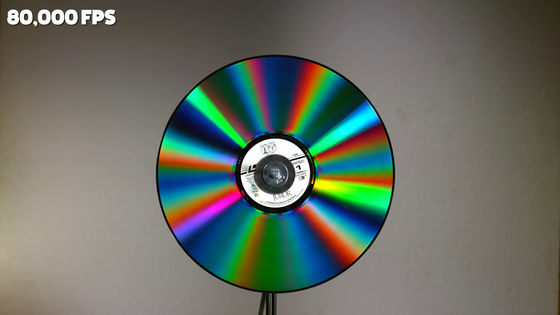
First, a crack appears in a part of the disk that has reached its limit.
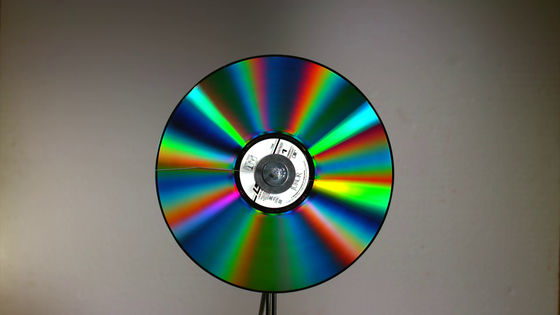
The crack spreads across the disc, causing further cracks to appear in other areas.
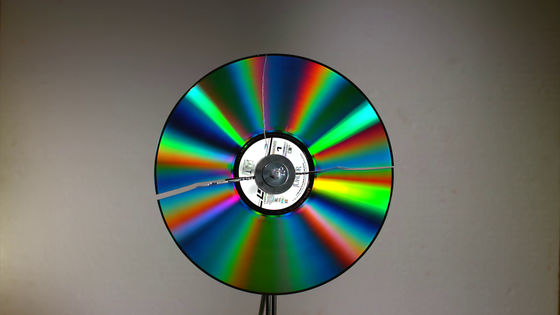
The disc splits along the crack.
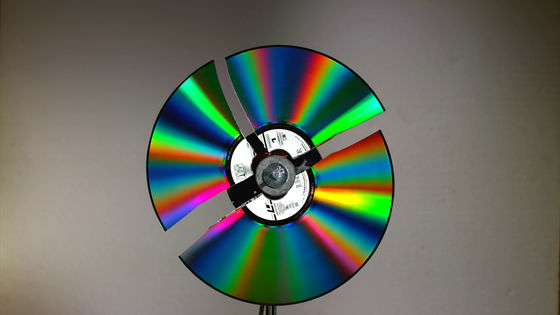
The end of the large lump collided with the rotation motor and was further split into two sides, the front and back.
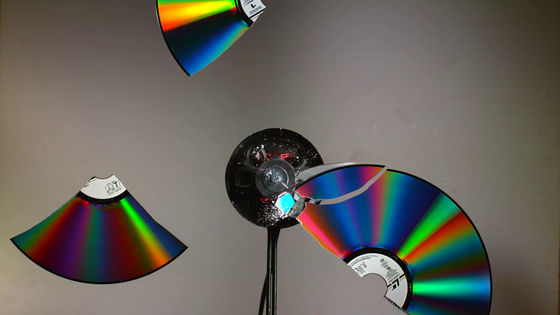
Another trial showed a completely different cracking pattern.
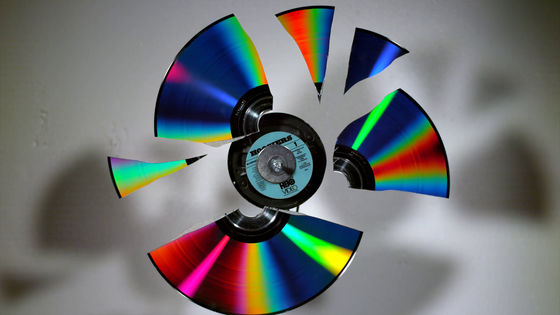
According to measurements, the rotational speed when the crack appeared was 98.9 m/s, and the speed at which the crack appeared was 686 m/s, which made both of them cry out in surprise.
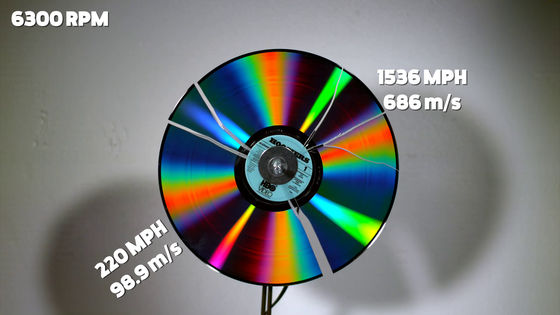
In addition, in the later experiment, a watermelon was broken with pieces of a laser disc.
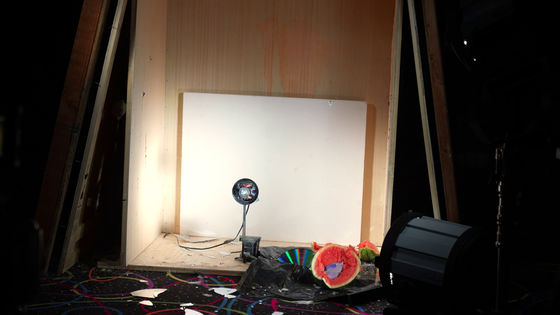
A piece of debris pierces the watermelon from the bottom left.
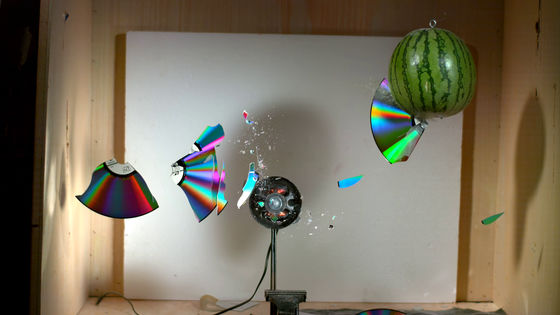
Eventually it popped out from the top right.
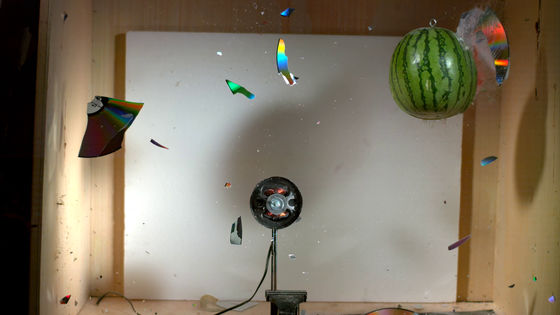
In addition, after the experiment, there were many cracks on the bottom of the wooden box. I am told not to imitate it at home.
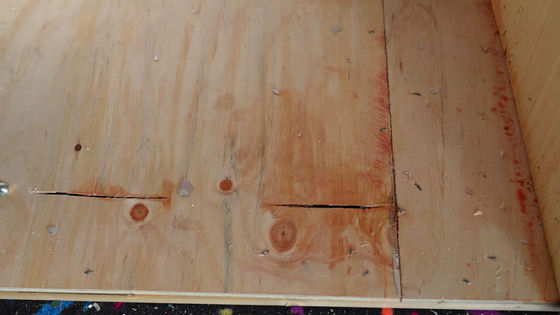
Related Posts:
in Video, Posted by logc_nt



